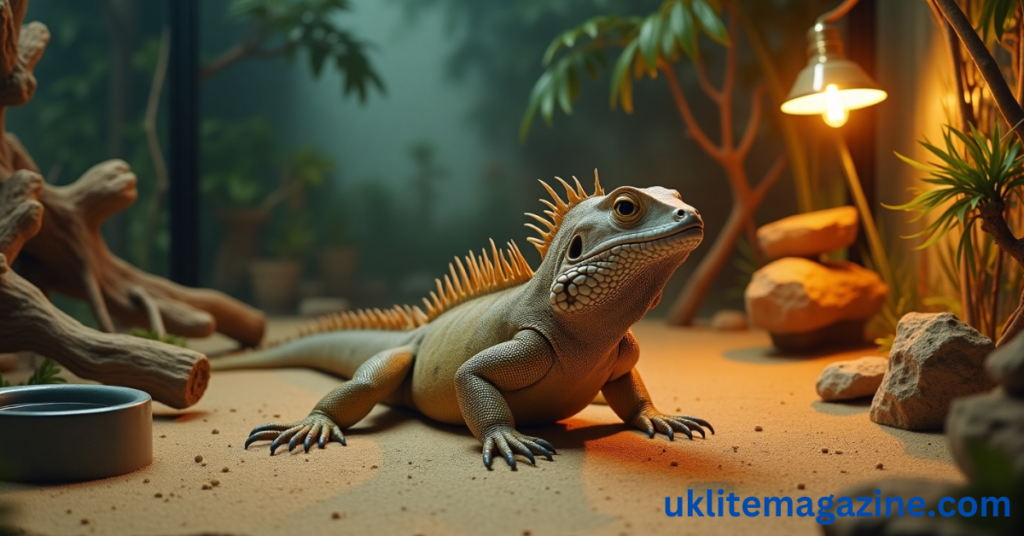The Savannah monitor (Varanus exanthematicus) is a powerful, ground-dwelling lizard native to sub-Saharan Africa. Known for its sturdy build and curious behavior, it’s a popular reptile among experienced pet keepers. However, these lizards require very specific care, including proper diet, housing, and handling. This guide covers everything you need to know before owning or caring for a Savannah monitor.
What Is a Savannah Monitor?
The Savannah monitor is a type of monitor lizard found in grasslands and savannahs throughout Africa. These lizards are carnivorous and are known for their muscular bodies, sharp claws, and strong jaws. While they can be fascinating pets, they are not suitable for beginners due to their size and complex care needs.
Basic Savannah Monitor Information
| Feature | Details |
|---|---|
| Scientific Name | Varanus exanthematicus |
| Native Region | Sub-Saharan Africa |
| Adult Size | 2.5 to 4 feet |
| Average Weight | 8 to 13 pounds |
| Lifespan in Captivity | 10 to 15 years |
| Price (2025 Estimate) | $100 – $300 |
| Temperament | Generally docile, can be defensive |
| Diet | Insects, rodents, small animals |
| Activity Level | Moderate |
Housing and Habitat Requirements
Enclosure Size
Savannah monitors require a large, secure enclosure, especially as they grow. A glass tank may work for juveniles, but adult monitors need custom-built enclosures.
-
Juveniles: 40-gallon tank (minimum)
-
Adults: 6 ft (L) x 3 ft (W) x 2.5 ft (H) or larger
Temperature and Lighting
Proper heating and lighting are critical to their health and digestion.
-
Basking Spot: 100–110°F
-
Cool Side: 75–85°F
-
Night Temperature: Should not drop below 70°F
-
UVB Lighting: Required for calcium metabolism and to prevent metabolic bone disease
Substrate and Enclosure Setup
Use a substrate that allows burrowing, such as:
-
Topsoil mixed with sand
-
Cypress mulch
Add hiding spots, logs, and rocks to simulate a natural environment. Keep humidity levels moderate (40–60%), with a water bowl for soaking.
Diet and Feeding Guide
Savannah monitors are carnivorous and need a varied diet. Avoid overfeeding fatty or inappropriate foods like processed meat or fruits.
Recommended Foods:
| Food Type | Examples | Frequency |
|---|---|---|
| Insects | Crickets, dubia roaches, mealworms | Daily (for juveniles) |
| Rodents | Pinkies, fuzzies (for adults) | 1–2 times/week |
| Eggs (treat) | Boiled or raw (in moderation) | Occasionally |
| Fish | Tilapia, small whole fish (no bones) | Occasionally |
Note: Always dust insects with calcium powder, especially for young lizards.
Behavior and Temperament
Savannah monitors are generally calm if raised with frequent handling. However, they can be defensive or aggressive if they feel threatened or stressed.
-
Young monitors may hiss or whip their tails
-
Regular, gentle interaction helps tame them
-
Avoid sudden movements during handling
They are intelligent and can recognize routines, often becoming more interactive with consistent care.
Health and Lifespan
With proper care, a Savannah monitor can live between 10 and 15 years in captivity. Common health issues include:
-
Obesity from overfeeding
-
Metabolic bone disease from poor lighting/diet
-
Respiratory infections from improper humidity
Regular vet checkups and a balanced diet are essential.
Conclusion
The Savannah monitor is a unique and rewarding pet for experienced reptile keepers. It requires space, a controlled environment, and a proper diet to thrive. If you’re willing to invest the time, money, and effort, a Savannah monitor can be a fascinating addition to your reptile family.
Frequently Asked Questions (FAQs)
Is a Savannah monitor a good pet?
Yes, but only for experienced reptile keepers. They need large enclosures, proper heating, and a protein-rich diet. Their care is more complex than many other lizards.
Are Savannah monitor lizards aggressive?
They are not naturally aggressive but can become defensive if frightened or improperly handled. With regular handling and patience, they usually become more tolerant of human interaction.
Can Savannah monitors eat fish?
Yes, they can eat fish such as tilapia or small whole fish. However, fish should only be an occasional part of their diet and should be free of bones and seasoning.
How big will a Savannah monitor get?
Adults typically reach 2.5 to 4 feet in length, with males usually being larger than females.
What is Savannah monitor price ?
The price can vary from $100 to $300, depending on the age, health, and source. Always buy from a reputable breeder or pet shop.
What is Savannah monitor weight ?
An adult Savannah monitor typically weighs between 8 and 13 pounds, depending on diet and health.

